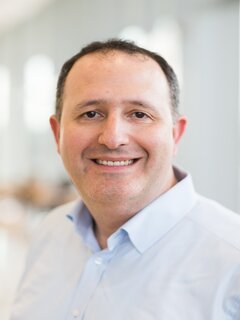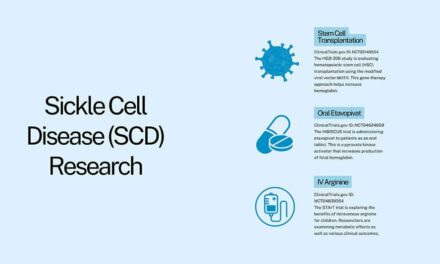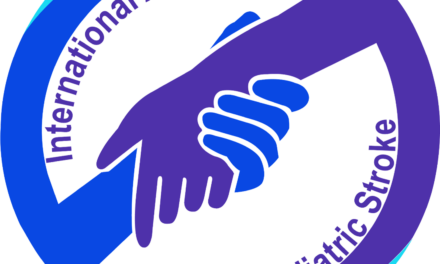I would like to shed light on a unique source of information. The Archives of Physical Medicine and Rehabilitation is a respected scientific journal publishing original research and clinical reports related to multiple rehabilitation fields. The journal began in 1920 and is the official journal of the American Congress of Rehabilitation Medicine (ACRM). In each issue, a special type of paper called Information Education Pages (I/EP) provide layperson-friendly information. If you are like me, you will never look at the abbreviation I/EP without thinking about Individual Education Plans, so I like to call these papers “the other IEP”. The ACRM website describes these papers as follows:
“[The I/EP] are targeted toward people with disabilities, their caregivers or clinicians; and are designed so that the practitioner can tear out and copy, or download the pages, to make them available to patients and caregivers.”
Although the I/EP does not reach typical scientific standards, submissions go through a peer review process. In my first experience writing one, I was essentially told to go back to the drawing board. This is a good sign for the reader because you know there are some checks and balances happening. As a clinician, I often find the I/EP refreshing, so I encourage professionals as well as consumers to read them. By writing one, I learned to communicate more decisively and clearly (as I write this blog about the power of clear, simple language, I realize the irony of publishing an I/EP about I/EPs!). Perhaps, professionals should always write in layperson’s language and more journals should provide this type of forum. Providing vetted information in layperson’s terms is one of the important functions of IPSO.
Another source worthy of mention is the Cochrane Library layperson’s summaries. Cochrane reviews are high quality papers synthesizing and appraising many studies on one topic to produce more reliable conclusions. Each Cochrane review includes a plain language summary as a standalone document. A good example of a Cochrane review relevant for pediatric stroke would be “Constraint-induced movement therapy in children with unilateral cerebral palsy” by Brian Hoare and colleagues (2019), link below. If a parent were to search the internet for therapy for children with hemiparesis (weakness on one side of the body) this might lead them to think they must get intensive constraint induced movement therapy (CIMT), otherwise their child is not getting good care. This is not the case. Yes, intensive programs and CIMT are based on evidence and can be very useful. However, as the Cochrane review states in plain language, they are not the only option. CIMT is probably not the best option for all individuals. Bimanual therapy and goal directed training are other therapies supported by research.
Recently, the Pediatric Stroke Task Force of the ACRM published three I/EPs related to pediatric stroke. We titled the first one “Therapy choices for children with difficulties using 1 hand after a brain injury”. Why didn’t we write “pediatric stroke” in the title? The research in this area has included children with hemiparesis from many different causes. Much of this literature is indexed under the term “unilateral cerebral palsy” (UCP), but applies to children who have hemiparesis from brain injury that occurred later in life. While we wish there was more specific information for stroke, there are huge benefits when laypeople and professionals can apply what we have learned from other diagnoses. This can really expand the options for children with stroke. In this paper you can read more about bimanual therapy and goal directed training mentioned above. The second I/EP we wrote, “Returning to school after pediatric stroke”, was also written for caregivers We wrote the third I/EP, “Neuromuscular electrical stimulation for children with stroke”, for therapists, however caregivers might find it useful and can certainly share it with their child’s therapy team. Remember, these papers are free to distribute! Many research papers live behind expensive walls and cannot be shared without fees. We hope that you find these I/EPs useful and that we spark discussion about how to distribute quality information about pediatric stroke more easily and equitably.
Links to Information Education Pages
Therapy Choices for Children With Difficulties Using 1 Hand After a Brain Injury
Returning to School After Pediatric Stroke
Neuromuscular Electrical Stimulation for Children With Stroke
Link to Cochrane Review Plain Language Summaries
Constraint‐induced movement therapy in the treatment of the upper limb in children with unilateral cerebral palsy
Cochrane Library Link- Here, you can browse by topic. If you find something of interest, each report includes a plain language summary.
The International Alliance for Pediatric connects the pediatric stroke community worldwide to share vetted information and a variety of supports. Here is a link to their research findings page.
About the Author

Todd J. Levy, MS, OTR/L, CBIST-AP
Children’s Hospital of Philadelphia
Todd J. Levy, MS, OTR/L, CBIST-AP is a clinical specialist in occupational therapy at Children’s Hospital of Philadelphia where he works together with a multi-disciplinary team dedicated to pediatric stroke. He enjoys bringing together professionals with differing skillsets as well as consumers to optimize care.




